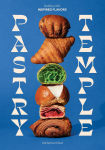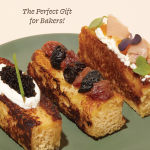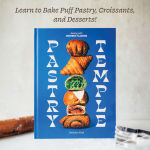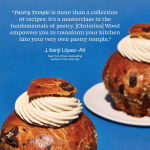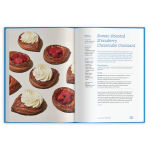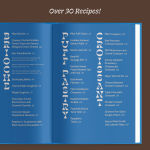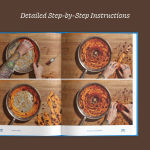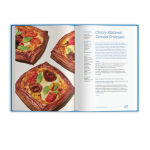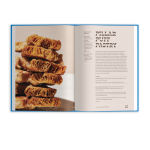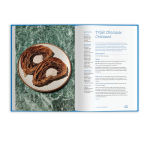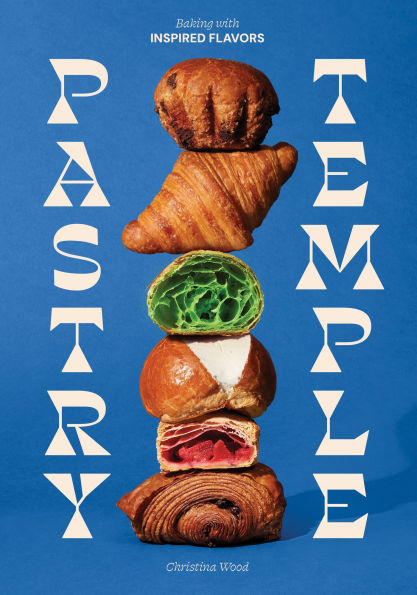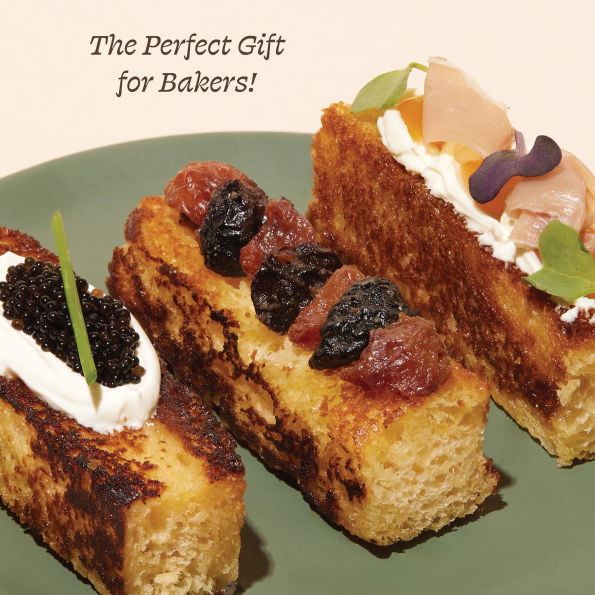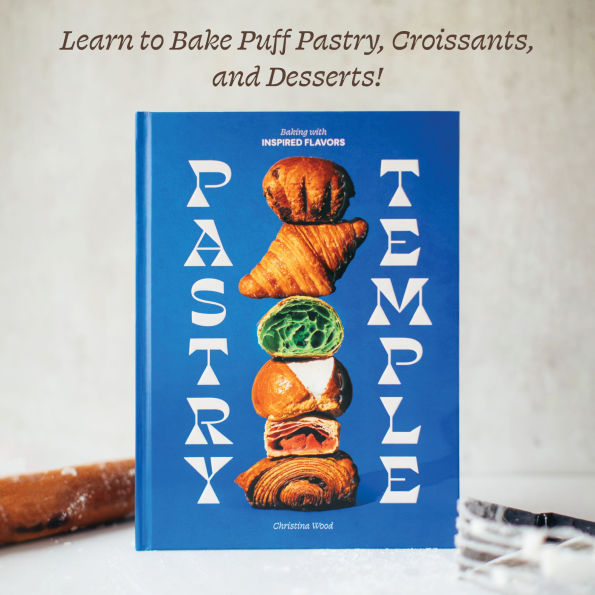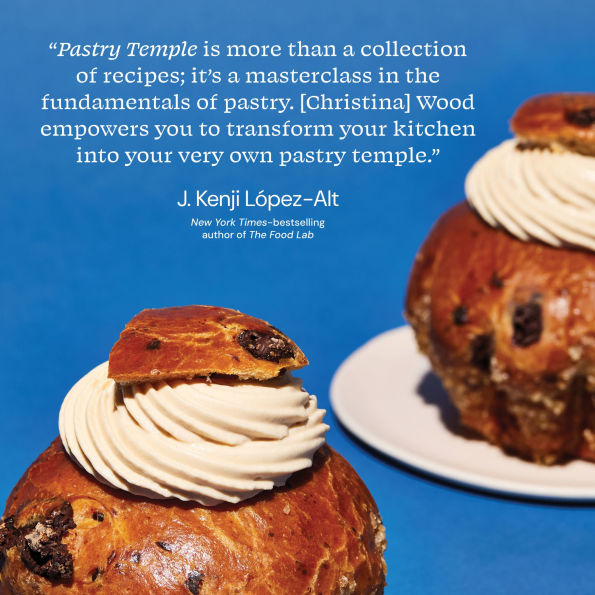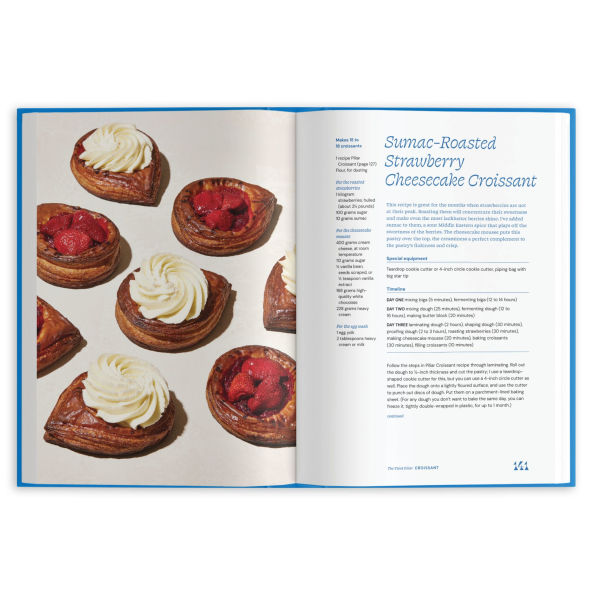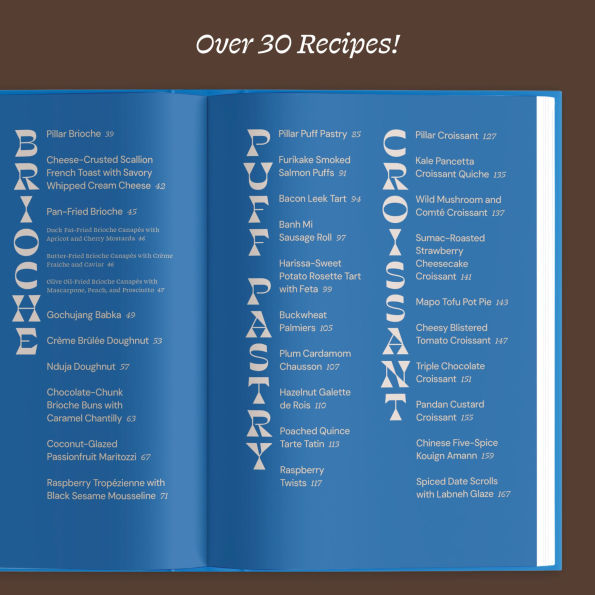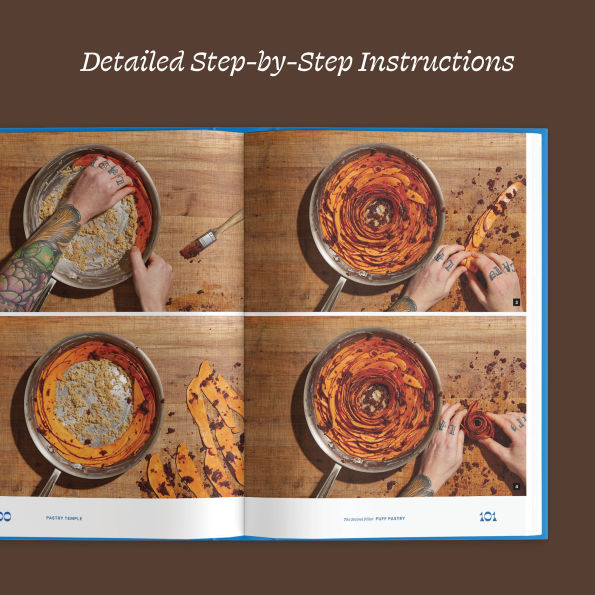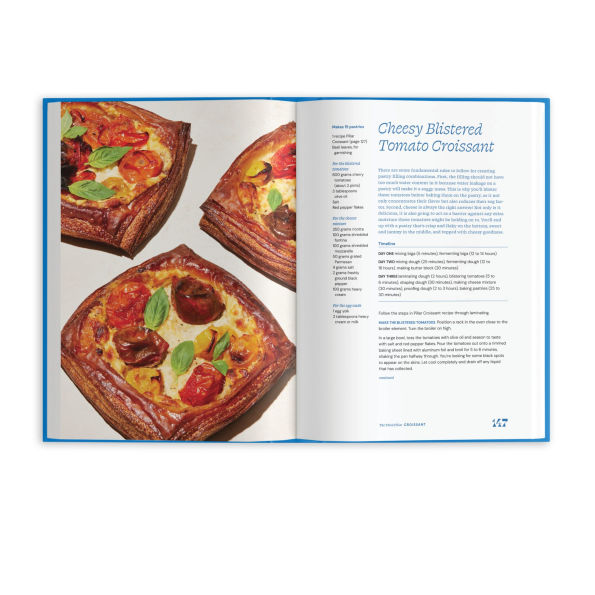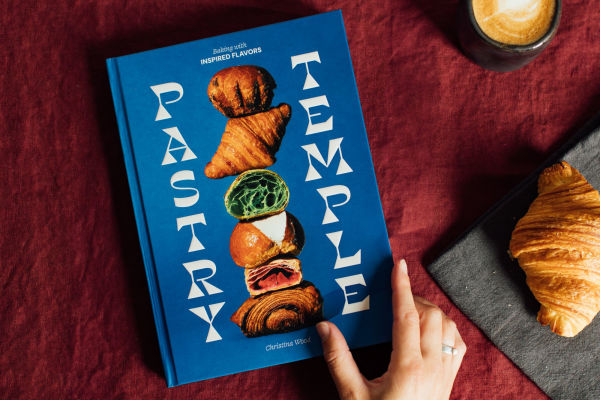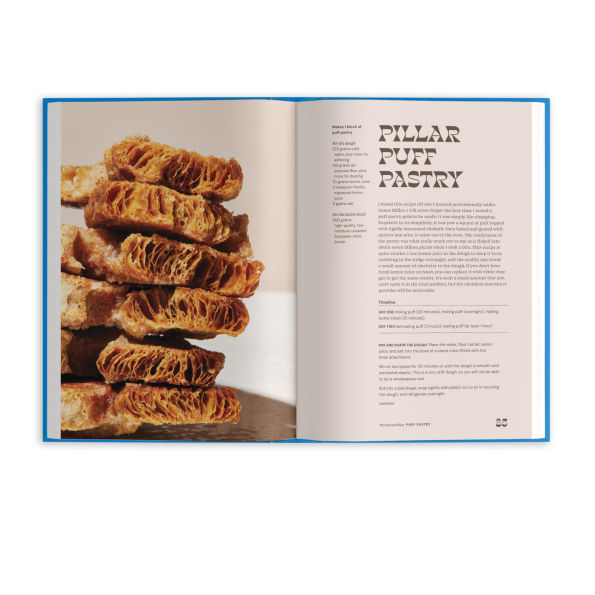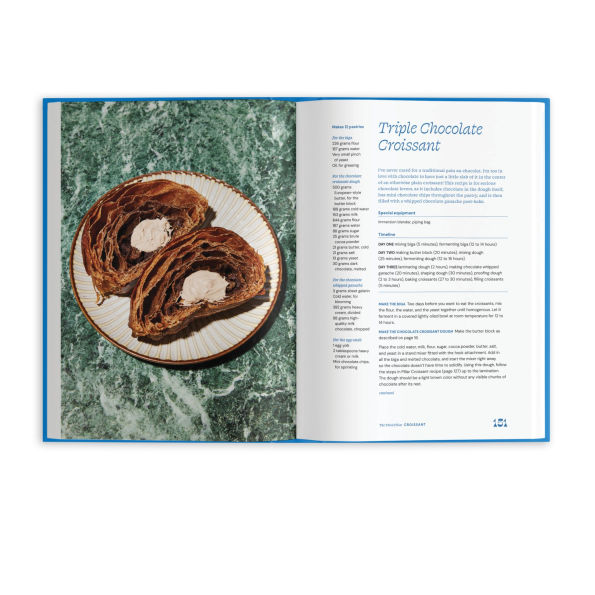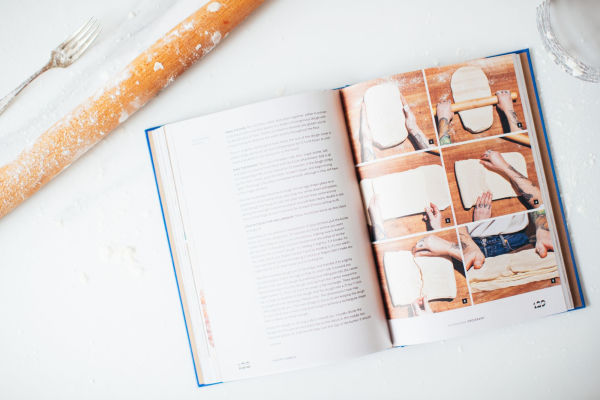Pastry Temple: Baking with Inspired Flavors (A Pastry Cookbook for Croissant, Brioche, and Puff Pastry)
Make out-of-this-world, showstopping bakes by perfecting the Three Pillars of Pastry (brioche, puff pastry, and croissant) with the steady hand of a self-taught baker as your guide.
In this pastry cookbook, you'll find 30+ innovative, sweet and savory recipes crafted by the highly sought-after Temple Pastries bakery.
JOIN THE CULT OF THE CROISSANT! In this creative pastry cookbook, master three foundational dough recipes: brioche, puff pastry, and croissant. Then build confidence with 30+ recipes that bring those bakes to life in all their mouthwatering glory.
Author Christina Wood—self-taught home baker turned owner and benevolent leader of Temple Pastries—swoops in to demystify those intimidating, picture-perfect pastries that may have felt too challenging to attempt. Ideal for experienced home bakers, you'll find step by step guidance in clear, unambiguous language; detailed timelines for planning your day; and plenty of process shots to bestow necessary confidence.
Includes savory and not-too-sweet flavors such as:
Sweet tooths are covered too!
We know you've already mastered cakes and cookies. Now take your skills to the next level with these three mouthwatering pillars of pastry!
1146800657
In this pastry cookbook, you'll find 30+ innovative, sweet and savory recipes crafted by the highly sought-after Temple Pastries bakery.
JOIN THE CULT OF THE CROISSANT! In this creative pastry cookbook, master three foundational dough recipes: brioche, puff pastry, and croissant. Then build confidence with 30+ recipes that bring those bakes to life in all their mouthwatering glory.
Author Christina Wood—self-taught home baker turned owner and benevolent leader of Temple Pastries—swoops in to demystify those intimidating, picture-perfect pastries that may have felt too challenging to attempt. Ideal for experienced home bakers, you'll find step by step guidance in clear, unambiguous language; detailed timelines for planning your day; and plenty of process shots to bestow necessary confidence.
Includes savory and not-too-sweet flavors such as:
- Chinese Five-Spice Kouign Amann
- Gochujang Babka
- Harissa-Sweet Potato Rosette Tart with Feta
- Cheesy Blistered Tomato Croissant
Sweet tooths are covered too!
- Poached Quince Tarte Tatin
- Creme Brulee Donut
- Sumac-Roasted Strawberry Cheesecake Croissant
We know you've already mastered cakes and cookies. Now take your skills to the next level with these three mouthwatering pillars of pastry!
Pastry Temple: Baking with Inspired Flavors (A Pastry Cookbook for Croissant, Brioche, and Puff Pastry)
Make out-of-this-world, showstopping bakes by perfecting the Three Pillars of Pastry (brioche, puff pastry, and croissant) with the steady hand of a self-taught baker as your guide.
In this pastry cookbook, you'll find 30+ innovative, sweet and savory recipes crafted by the highly sought-after Temple Pastries bakery.
JOIN THE CULT OF THE CROISSANT! In this creative pastry cookbook, master three foundational dough recipes: brioche, puff pastry, and croissant. Then build confidence with 30+ recipes that bring those bakes to life in all their mouthwatering glory.
Author Christina Wood—self-taught home baker turned owner and benevolent leader of Temple Pastries—swoops in to demystify those intimidating, picture-perfect pastries that may have felt too challenging to attempt. Ideal for experienced home bakers, you'll find step by step guidance in clear, unambiguous language; detailed timelines for planning your day; and plenty of process shots to bestow necessary confidence.
Includes savory and not-too-sweet flavors such as:
Sweet tooths are covered too!
We know you've already mastered cakes and cookies. Now take your skills to the next level with these three mouthwatering pillars of pastry!
In this pastry cookbook, you'll find 30+ innovative, sweet and savory recipes crafted by the highly sought-after Temple Pastries bakery.
JOIN THE CULT OF THE CROISSANT! In this creative pastry cookbook, master three foundational dough recipes: brioche, puff pastry, and croissant. Then build confidence with 30+ recipes that bring those bakes to life in all their mouthwatering glory.
Author Christina Wood—self-taught home baker turned owner and benevolent leader of Temple Pastries—swoops in to demystify those intimidating, picture-perfect pastries that may have felt too challenging to attempt. Ideal for experienced home bakers, you'll find step by step guidance in clear, unambiguous language; detailed timelines for planning your day; and plenty of process shots to bestow necessary confidence.
Includes savory and not-too-sweet flavors such as:
- Chinese Five-Spice Kouign Amann
- Gochujang Babka
- Harissa-Sweet Potato Rosette Tart with Feta
- Cheesy Blistered Tomato Croissant
Sweet tooths are covered too!
- Poached Quince Tarte Tatin
- Creme Brulee Donut
- Sumac-Roasted Strawberry Cheesecake Croissant
We know you've already mastered cakes and cookies. Now take your skills to the next level with these three mouthwatering pillars of pastry!
24.95
Pre Order
5
1

Pastry Temple: Baking with Inspired Flavors (A Pastry Cookbook for Croissant, Brioche, and Puff Pastry)
208
Pastry Temple: Baking with Inspired Flavors (A Pastry Cookbook for Croissant, Brioche, and Puff Pastry)
208
24.95
Pre Order

Product Details
| ISBN-13: | 9781632175502 |
|---|---|
| Publisher: | Blue Star Press |
| Publication date: | 09/30/2025 |
| Pages: | 208 |
| Product dimensions: | 7.52(w) x 10.27(h) x 0.85(d) |
About the Author
From the B&N Reads Blog
